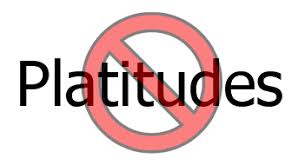Carcass Picking.
“New” and “Sale” are the two most common words in advertising I was told growing up in the business. It’s not apocryphal to think it is still the case. As a brand planner or ad person, new categories always interested me. I was doing technology advertising when chips weren’t cool. Integrated circuits, software defined networks, private data lines, SaaS were all products of mine.
 In advertising it’s good to work in emerging products, technologies and services. They are high growth. Not a lot of people are expert so your thoughts are creative, sometimes ground breaking, and non-commoditized. But the simple fact is, the marketers most in need of strategy help are not in the business of new, they are in tired, mature categories where growth isn’t happening. And when growth isn’t happening you are likely trying to take someone else’s share, not creating new share. Carcass picking.
In advertising it’s good to work in emerging products, technologies and services. They are high growth. Not a lot of people are expert so your thoughts are creative, sometimes ground breaking, and non-commoditized. But the simple fact is, the marketers most in need of strategy help are not in the business of new, they are in tired, mature categories where growth isn’t happening. And when growth isn’t happening you are likely trying to take someone else’s share, not creating new share. Carcass picking.
What does the brand planner do in these cases?
Well, you have to make your insights and strategies new. Treat them like emerging markets. The consuming brain loves new. That’s why people get so tired of advertising. It’s not new. That’s why ad agencies are fired every 3.8 years (just made that number up). It’s easier to create new advertising that new brand strategy.
I can change one plank of a brand strategy and open up crazy new revenue. (Brand strategy comprises one claim and three proof planks.) Brand strategy is like DNA. Make a subtle changes and lots can happen. Imagine what would happen with a total brand strategy overhaul.
For brand planners there can be no such thing as stale businesses or categories. Everything “new” is a potential “sale.”
Peace.




